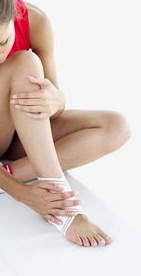Achilles Tendonitis Treatments
The largest tendon of the body is the Achilles tendon. It is located at the back of the foot and serves to attach the back of the heel bone to the large calf muscles. Since it is subjected to large amount of stress during running and jumping, it is prone to injury and can cause heel pain.
Achilles tendonitis or Achilles tendinopathy is the most common form of injury to the Achilles tendon. This is a condition of irritation and inflammation of the tendon that can cause swelling and pain, most often behind the heel.
Heel pain in Achilles tendonitis is generally associated with an increase in running or jumping intensity or frequency. Acute tendonitis is characterized by pain at the onset of activity and fades as the exercise progresses. Pain usually subsides with rest. Chronic Achilles tendonitis may develop if acute tendonitis is not managed properly or left untreated.
There are several ways to treat Achilles tendonitis. The most basic step is to rest the affected foot to allow the inflammation to subside. Avoiding the use of low-heeled shoes and putting heel lifts into the shoes can help. It is also recommended to avoid barefoot walking.
NSAIDS or non-steroidal anti-inflammatory drugs can be taken to relieve inflammation. NSAIDS are an over the counter medication and are available in many areas.
Applying ice to the swollen area also helps calm the inflammatory process. Cold therapy reduces pain and swelling because ice causes the blood vessels to narrow, limiting internal bleeding to the injured area. Icing also numbs the inflamed part, making it less painful. However, do not apply ice directly to the skin and instead wrap it in a thin towel before using over the injury.
If heel pain persists, immobilization of the foot can help. Foot orthotics or below the knee cast can be advised to help the Achilles tendon heal more rapidly, especially in chronic cases that do not respond to conservative measures.
